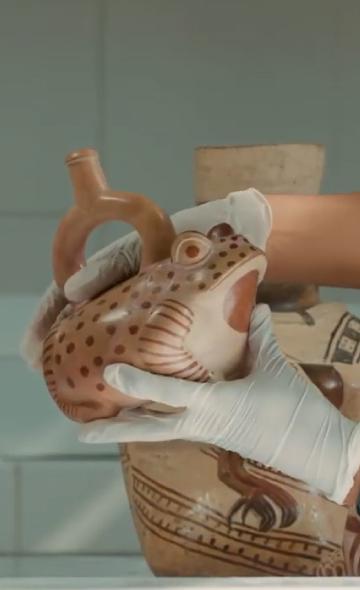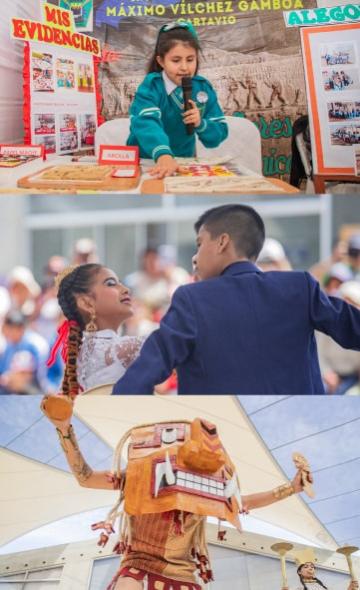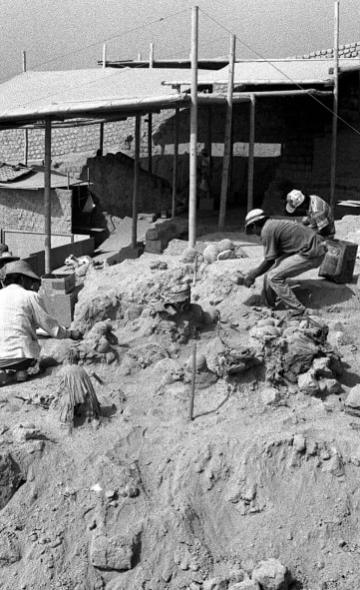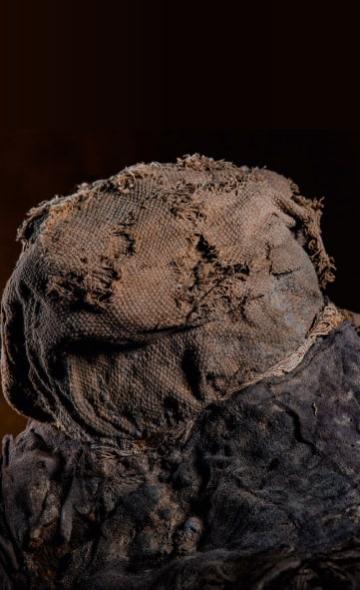- Visitors
- Researchers
- Students
- Community
- Information for the tourist
- Hours and fees
- How to get?
- Virtual tours
- Classic route
- Mystical route
- Specialized route
- Site museum
- Know the town
- Cultural Spaces
- Cao Museum
- Huaca Cao Viejo
- Huaca Prieta
- Huaca Cortada
- Ceremonial Well
- Walls
- Play at home
- Puzzle
- Trivia
- Memorize
- Crosswords
- Alphabet soup
- Crafts
- Pac-Man Moche
- Workshops and Inventory
- Micro-workshops
- Collections inventory
- News
- Students
- Animals in Moche art? Learn how fauna influenced Moche iconography
News
CategoriesSelect the category you want to see:

International academic cooperation between the Wiese Foundation and Universidad Federal de Mato Grosso do Sul ...

Clothing at El Brujo: footwear ...
To receive new news.
Por: Complejo Arqueológico El Brujo
At the El Brujo Archaeological Complex, more than 290 original pieces are on display, among which is the mummy of the Lady of Cao. However, the pieces exhibited are not the only ones discovered during the excavations done at the complex; there is also material that is kept in storage rooms and laboratories, which adds up to more than 30 thousand pieces, which are still being studied by professionals of archaeology and conservation.
Through the miniseries “El Brujo: Access Allowed”, the Wiese Foundation shares, with audiovisual material, some of the traditions and cultural customs of the people that inhabited this region, through the showing of the pieces found in this place.
In Chapter 3 of the second season of the miniseries, the topic of fauna in Moche ceramics is presented, sharing greater detail about the pre-Hispanic fauna present in the objects found at the El Brujo Archaeological Complex.
Brief historical context

Moche society developed approximately 1,900 years ago on the Peruvian North Coast. During its occupation, the artistic ability developed and portrayed on its ceramics is noteworthy. Through this, they were capable of representing their cosmovision.
Motivations of the Moche artists
There were various factors that influenced Moche artists. For example:
- Graphically expressing the daily life of the inhabitants.
- Religious motives.
In this context, fauna was an important resource as a part of the environment that surrounded them.
What was the process of Moche ceramic production like?
This can be structured in stages:
- Obtaining the raw material, in this case clay, which was prepared with the goal of obtaining a malleable and uniform paste.
- Shaping the clay by hand, giving form to representations of animals in the material. This could also be done through the use of molds.
- The third step was firing the piece in the oven, as well as the final treatments and decorations.
Thanks to the pictorial and sculpted representations of Moche culture, we can appreciate the figures in two and three dimensions, respectively.
Representation of Moche ceramics with animal structures
Animal representations in Moche ceramics can be organized into three groups:
- Terrestrial: Here we can find felines, cervids, anurans (toads and frogs), reptiles (lizards), primates, camelids, canids, snakes (serpents), and snails.

- Aerial: In terms of these, we see cormorants, owls, and ducks.

- Aquatic: These are represented by sea lions, fish, and crustaceans, such as shrimp and crabs.
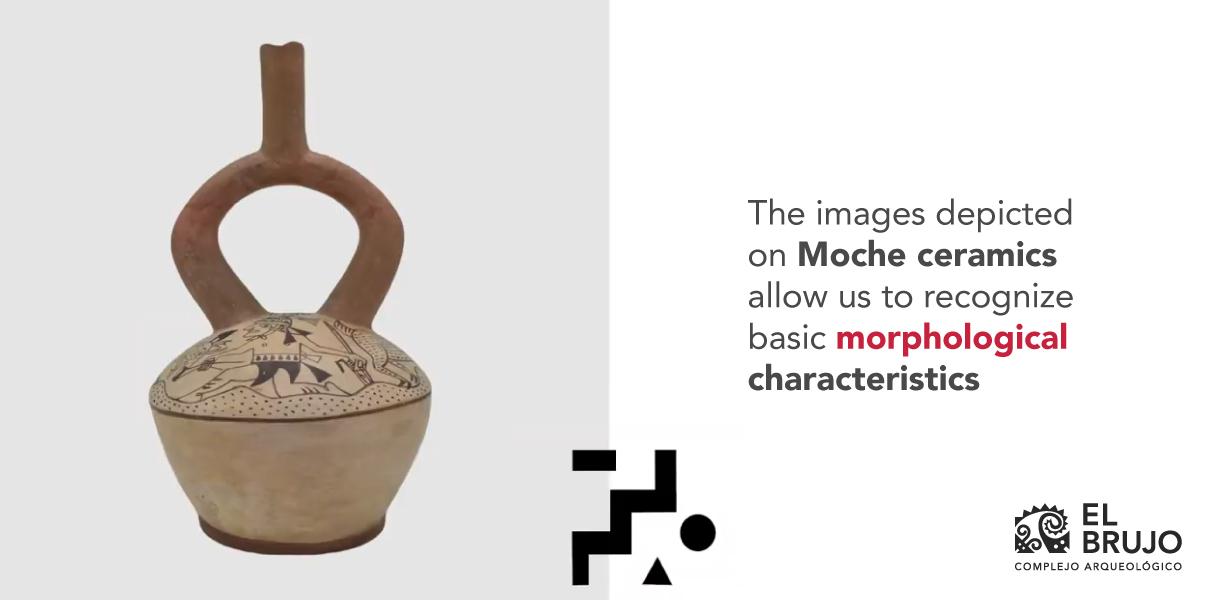
The images depicted on Moche ceramics show basic morphological characteristics of the animals represented, through which we can only arrive at a general identification.
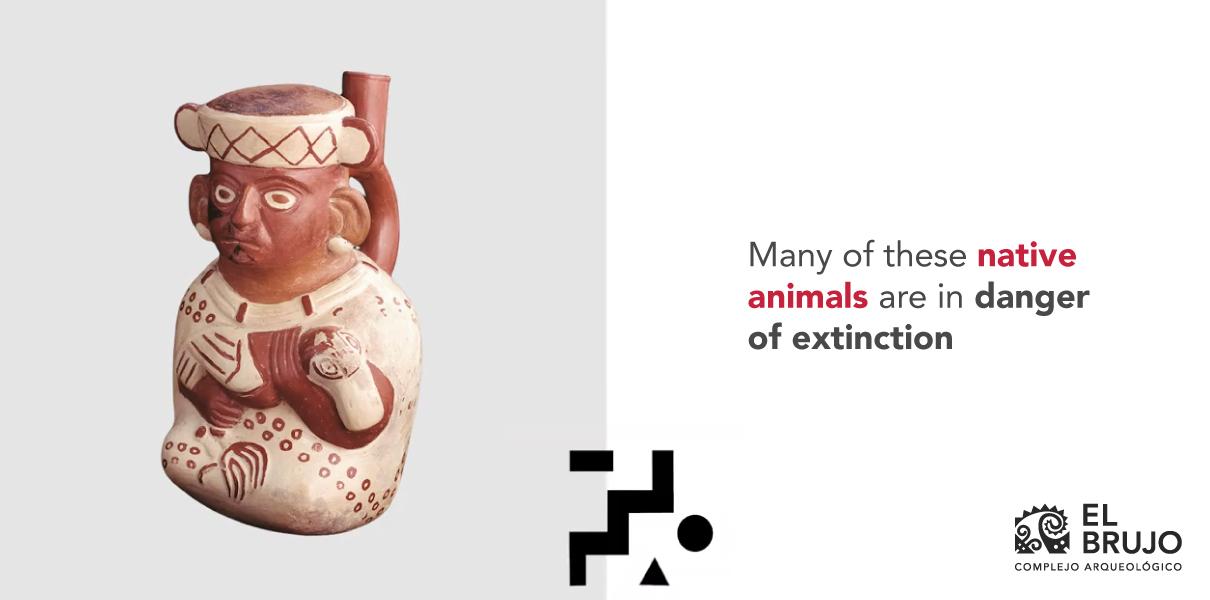
The study of fauna in archaeological materials allows us to reflect on the importance of the sustainable consumption of some animals and our responsibility as a society to take care of the environment for future generations.
The full video of this episode can be seen at this link: https://www.youtube.com/watch?v=MZHxHo_8lYM
Students , outstanding news


